Intel: For Mainstream Gamers, Our IGPs Are Equivalent to Discrete GPUs
by Anton Shilov on January 14, 2016 12:03 PM EST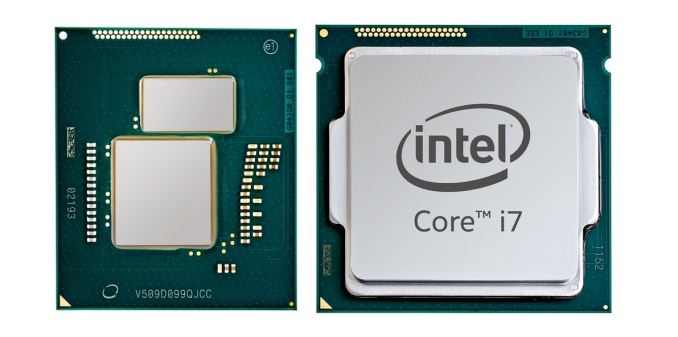
Intel’s integrated graphics processors (iGPUs) are the most widespread PC-class graphics adapters on the planet. Enthusiasts of high-performance personal computers do not use Intel’s iGPUs, but the world’s largest developer of microprocessors says that for mainstream and casual gamers its graphics solutions offer performance, which is comparable to that of inexpensive discrete video cards.
“For the mainstream and casual gamer, we have improved our Iris and Iris Pro graphics tremendously,” said Gregory Bryant, vice president and general manager of the desktop client platforms at Intel, at the J.P. Morgan Tech Forum at the 2016 International CES. “We have improved our graphics performance [by 30 times] from where it was five years ago. We believe that the performance of Intel’s integrated graphics today, what we offer in the products […], is equivalent to the performance of about 80% of discrete [GPU] installed base.”
Intel has been improving its integrated graphics cores at a rapid pace after the company cancelled its discrete graphics processing unit code-named Larrabee in 2010. Thanks to timely transition to newer process technologies, Intel could increase transistor budgets of its central processing units significantly every couple of years. As the company did not increase the number of general-purpose cores inside its mainstream CPUs for desktop and mobile personal computers in the recent years, the lion’s share of that additional transistor budget was spent on iGPU-related improvements.
Intel considers its code-named Clarkdale and Arrandale processors its first-generation CPUs with integrated graphics (which is not entirely correct since these CPUs had two dies: the processor die as well as graphics and integrated memory controller die). Back then, Intel’s most advanced iGPU featured 12 execution units (EU) with peak compute performance of around 43 GFLOPS. Since then, the architecture of Intel’s integrated graphics processors has evolved to accommodate new features and gain performance. Today, each EU features two ALUs that can execute up to four 32-bit floating point or integer operations per cycle (in fact, one of the two ALUs in Intel’s Gen8 EU also supports double precision 64-bit floating point operations). Intel’s latest microprocessors — Broadwell with GT3e and Skylake with GT4e graphics cores — have Iris Pro iGPUs with 48 and 72 EUs as well as peak compute performance of 883 and 1152 GFLOPS, respectively.
While Intel did not define what it considered to be the installed base of discrete graphics cards, it is obvious that the company compares its recent Iris and Iris Pro integrated graphics processors to discrete graphics adapters sold in the last five or even more years and which are currently in use.
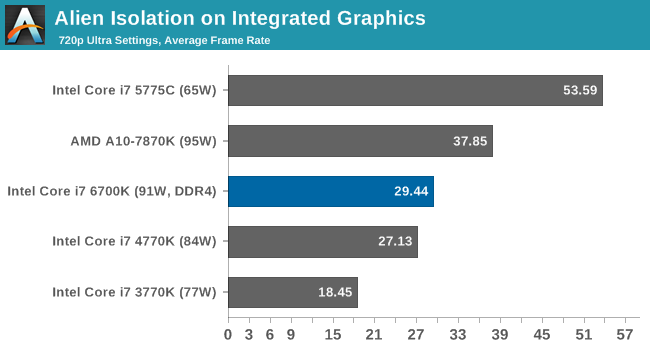
Intel’s latest integrated graphics processor found in its Skylake chips — the Iris Pro 580 with 72 execution units and 1152 GFLOPS compute performance — should outperform even more advanced discrete graphics processors. In fact, AMD's latest integrated graphics core also outperforms the low-end graphics card (albeit, by a small margin).
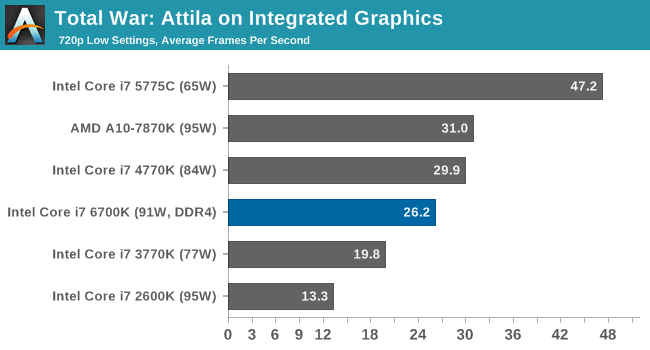

Because many people do not play demanding games that use the latest application programming interfaces (APIs), performance and features of Intel’s modern iGPUs may be enough for their needs. Moreover, since casual and even some mainstream gamers usually buy low-end graphics adapters, Intel’s Iris Pro 6200 and Iris Pro 580 can actually outperform such GPUs (or offer similar performance). It is not clear whether 80% of discrete graphics boards currently in use belong to the entry-level segment, but it evident that contemporary iGPUs are somewhat better than cheap video cards.
Even though enthusiast gamers do not use Intel’s high-end iGPUs, the company continues to thrive because of PC gaming. According to Intel’s management, sales of its Core i7-series microprocessors set records in Q2 2015 despite weak demand for personal computers overall. Moreover, Intel claims that shipments of high-end enthusiast-class hardware in general are at all-time high and growing. Intel sells not only powerful Core i7 CPUs with unlocked multiplier to demanding gamers, but also chipsets, solid-state drives, various controllers and other components for high-end PCs. As a result, the company takes advantage of increasing demand for powerful personal computers.
Source: Intel Investor Relations


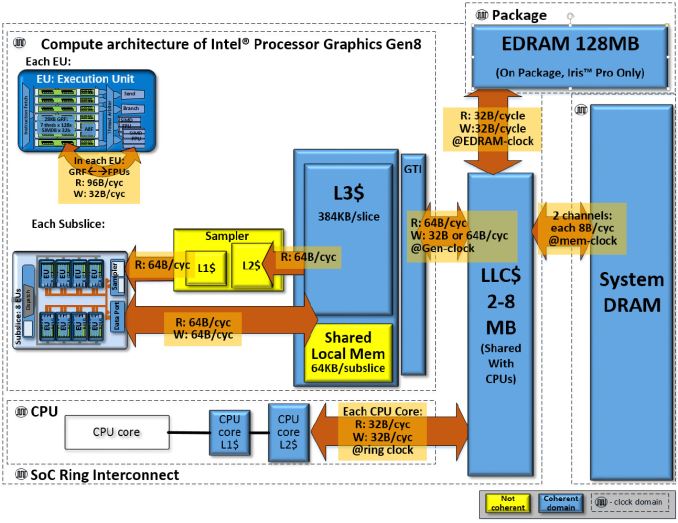
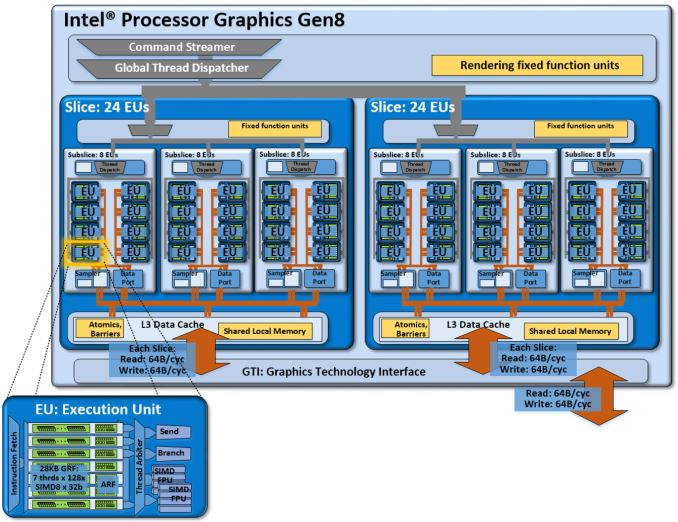








96 Comments
View All Comments
Gastec - Thursday, January 14, 2016 - link
On Amazon.com (US) the Intel Core i7-5775C can be bough for $402 . The Core i7-6700K is $418. Both are ENTHUSIAST grade CPU's and waaay overpriced.From the article, quote from Intel's VP Gregory Bryant: “For the mainstream and casual gamer, we have improved our Iris and Iris Pro graphics tremendously,”
I beleive that says it all, to further comment is needed.
iwod - Friday, January 15, 2016 - link
They are comparing their top of the line CPU with Best Graphics spec to a lower end GPU.Do they even realize the cost of these Iris Pro CPU?
r3loaded - Friday, January 15, 2016 - link
Mainstream nowadays is definitely 1080p at or close to 60fps. Practically everyone I know has this resolution and monitors are so cheap you can almost get them in cereal boxes. 1080p30 would be the entry level. You can get really cheap discrete cards that hit either performance level.mobutu - Friday, January 15, 2016 - link
lol, Intel, in your dreams :)also, should we also mention the topic of drivers and their "gaming" quality? ;)
BrokenCrayons - Friday, January 15, 2016 - link
One thing I haven't had significant problems with since the 4500MHD is Intel's GPU drivers. The GMA 950 drivers were rough, but some of the graphical issues I ran into back then were related to incomplete implementation of various features in the actual hardware (probably intentionally left out due to a lack of real estate on the chipset's die which was where the GPU resided before being moved to the CPU package with Arrandale...I think..whatever the first HD graphics were anyhow). In any event, Intel's drivers are pretty good these days and certainly very usable. The HD 3000 and the Cherry Trail's iGPU have both behaved perfectly with all the games I throw at them.nos024 - Friday, January 15, 2016 - link
Wow what an absolute garbage logic and article.Also, EPIC FAIL. You have a $130 7870K completely destroying a $400 i7 6700k.
jasonelmore - Friday, January 15, 2016 - link
From the graph's, it's easy to see intel is hitting a brick wall in diminishing returns. Their GPU Arch is not scaling well from 4770K to 6700K, despite having 40% more EU and ALU.Its time for them to start putting more cores, or do another architecture. Nvidia could wreck those numbers with that same GPU die space, if they had access to the lithography process. Same with AMD
BrokenCrayons - Friday, January 15, 2016 - link
Most of that wall is due to the graphics processor relying almost exclusively on shared system memory. eDRAM, per-EU caching, and other tricks only partly mitigate the fundamental problem Intel faces when competing with graphics cards that have GDDR5 or HBM that offers gobs of fast memory dedicated to the GPU's needs versus it being basically a free-for-all cage brawl between various other system components all contending for access to the computer's RAM. I'm genuinely surprised that Intel has come as far as it has while being memory-constrained.You are probably right though. Once NV and AMD have access to a 14/16nm process, they'll close the transistor size gap Intel currently enjoys. I think you'll see the tables quickly turn back in favor of budget GPUs outclassing Intel's iGPUs unless Intel somehow changes the situation again with their strange voodoo.
InternetLurker01 - Friday, January 15, 2016 - link
I think the point everyone is missing here is that IRIS 540 or the IRIS Pro 580 is EXTREMELY attractive when they are put inside ultrabooks and other slim-profile notebooks since these smaller notebooks typically can't house dGPU anyway due to space heat/ space restraint. So the whole debate about is Iris better or worse than some of the cheaper dGPU is not even relevant in this scenario. I'd much rather have Iris than have nothing at all in my surface pro 4 for example.Personally for me, I'm very excited for this tech. Popular example is the new Dell Skylake XPS 13 IRIS refresh that is coming up next month. The laptop was already a smash hit and with this inclusion of the Iris, all of a sudden it's VERY attractive solution for a mobile gamer like myself. I'm a semi-casual gamer that only plays games like League of Lengends and CS GO and Iris is more than capable of running those games at acceptable settings.
I was contemplating on whether or not I should get the larger DELL XPS 15 which is equipped with the 960M, but now I'm having second thoughts. Yes, 960M will blow the IRIS out of the water performance wise and we already established this. But the fact that I have options to achieve descent performance in a much smaller package units is really nice. Not all of us care to run Crysis level graphics nor do we have interest in playing games that look that nice.
lagittaja - Friday, January 15, 2016 - link
Yea, it's nice and all. Sure, nice performance FROM THE HIGHEST END SKU's.What most people have is GT1 and GT2. Which performance is fuck all compared to anything.
And about the desktop. Where the fuck are the GT3e and GT4e desktop models at a reasonable price? I would love to buy them. The Broadwell C models don't count.
Like where's the Core i3 with HD Graphics 540 (or 550)? That would sell like nuts. Or an i5 with HD Graphics 580. Or vice versa.
Intel is being all pompous and look at the benchmarks of our highest end iGPU SKU, looky look look. But the truth is, NOBODY has them.
Even if we look at laptops, on Geizhals.eu there's a whopping 22 laptops listed with Iris Pro graphics. Out of 2600+ listed which have Intel iGPU.